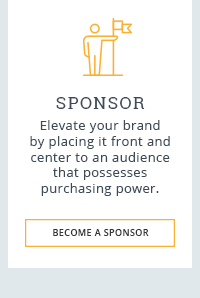20 août 2019 | Local, Terrestre
General Dynamics costs double original estimates
DAVID PUGLIESE, OTTAWA CITIZEN The Liberal government is buying new armoured vehicles for the Canadian Forces but the sole source deal will cost taxpayers double what was originally estimated. Defence Minister Harjit Sajjan announced Friday that the government would buy 360 combat support Light Armoured Vehicles from General Dynamics Land Systems-Canada, with the project costing $3 billion. The project was originally announced by the Liberal government with an estimated cost between $500 million and $1.5 billion. The plan was to award the contract in 2023 after a competition. But with the federal election looming the deal was fast-tracked by the Liberals, joining a series of recent defence-related funding announcements. A competition was jettisoned, replaced with a sole-source deal with General Dynamics, based in London, Ont. The deal includes a $650 million repayable loan, but the Department of National Defence said it had no details on that arrangement. It referred questions to Global Affairs Canada, which noted in an emailed statement that the federal government is “willing to provide a loan to General Dynamics Land Systems Canada to ensure the timely delivery of the Light Armoured Vehicles for our men and women in uniform. The Government of Canada is providing a loan to GDLS-C to support jobs and suppliers as GDLS-C navigates a challenging and dynamic international defence market.” The terms of the loan would be negotiated over the coming weeks, Global Affairs Canada added. The DND noted that the project costs include not only the vehicles but logistics support and new infrastructure to house and maintain the equipment. General Dynamics will provide the new vehicles in eight variants. They will be used as ambulances and in other roles such as vehicle recovery, engineering, mobile repair, electronic warfare and as command posts. The current fleet of armoured support vehicles is comprised of the LAV II Bison and the M113 tracked vehicle. The federal government said it is in the final stages of contract negotiations with General Dynamics. The contract is expected in the coming weeks. It noted in a news release that fast-tracking the deal would allow the Department of National Defence to save costs associated with maintaining or extending the life of the current fleet. The DND stated the contract was sole-sourced to General Dynamics as the firm builds most other armoured vehicles for the Canadian Forces and having a vehicle based on the same chassis allows for savings in maintenance and training. The company's light armoured vehicle is the core of the Canadian Forces armoured vehicle fleet. In addition, as the company has recently completed the conversion of the light armoured vehicle fleet to a new configuration so it has the skilled workforce in place, according to the DND. That would reduce the risk of delays in delivery of the new vehicles, stated the DND in an email. “For these reasons, we believe it would not be in the public interest to solicit bids,” it added in an email. General Dynamics Land Systems – Canada is also building similar light armoured vehicles for Saudi Arabia in a deal worth $15 billion. The Liberal government launched a review of that controversial contract after the murder of journalist Jamal Khashoggi inside the Saudi consulate in Turkey. Earlier this year a United Nations report determined that Saudi Arabia was responsible for the killing of Khashoggi who was a critic of that country's regime. Saudi Arabia has also faced severe criticism for its role in the ongoing war in Yemen, with allegations it has conducted unlawful airstrikes on civilians. A dozen organizations sent Prime Minister Justin Trudeau a letter earlier in August, questioning the status of the review and pointing out that no updates on progress have been provided. The lack of such information has brought “the sincerity of the effort into question,” according to the letter endorsed by organizations such as Oxfam Canada and Amnesty International. Various groups have demanded the Liberals cancel the Saudi deal, which was negotiated by the previous Conservative government. https://ottawacitizen.com/news/national/defence-watch/sole-source-armoured-vehicle-deal-with-general-dynamics-costs-double-original-estimates





